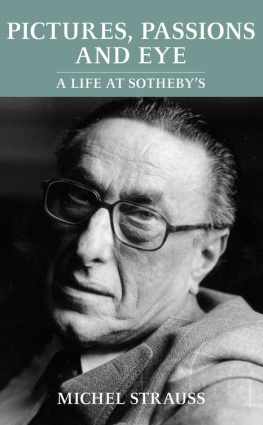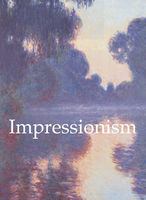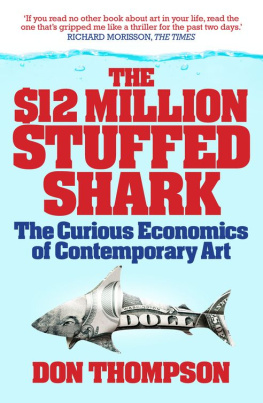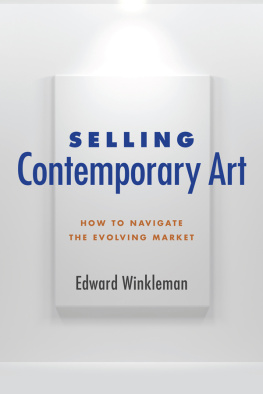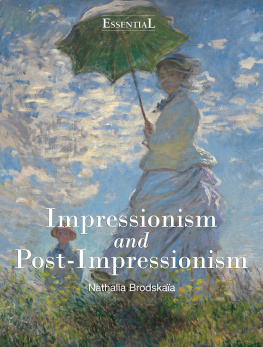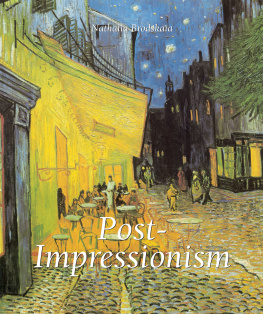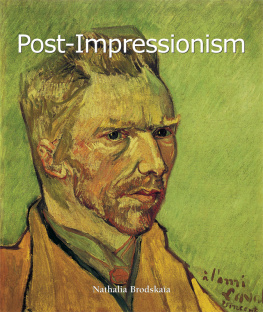Michel Strauss - Pictures, Passions and Eye: A Life at Sotheby’s
Here you can read online Michel Strauss - Pictures, Passions and Eye: A Life at Sotheby’s full text of the book (entire story) in english for free. Download pdf and epub, get meaning, cover and reviews about this ebook. year: 2011, publisher: Halban Publishers, genre: Non-fiction / History. Description of the work, (preface) as well as reviews are available. Best literature library LitArk.com created for fans of good reading and offers a wide selection of genres:
Romance novel
Science fiction
Adventure
Detective
Science
History
Home and family
Prose
Art
Politics
Computer
Non-fiction
Religion
Business
Children
Humor
Choose a favorite category and find really read worthwhile books. Enjoy immersion in the world of imagination, feel the emotions of the characters or learn something new for yourself, make an fascinating discovery.
- Book:Pictures, Passions and Eye: A Life at Sotheby’s
- Author:
- Publisher:Halban Publishers
- Genre:
- Year:2011
- Rating:4 / 5
- Favourites:Add to favourites
- Your mark:
- 80
- 1
- 2
- 3
- 4
- 5
Pictures, Passions and Eye: A Life at Sotheby’s: summary, description and annotation
We offer to read an annotation, description, summary or preface (depends on what the author of the book "Pictures, Passions and Eye: A Life at Sotheby’s" wrote himself). If you haven't found the necessary information about the book — write in the comments, we will try to find it.
Pictures, Passions and Eye: A Life at Sotheby’s — read online for free the complete book (whole text) full work
Below is the text of the book, divided by pages. System saving the place of the last page read, allows you to conveniently read the book "Pictures, Passions and Eye: A Life at Sotheby’s" online for free, without having to search again every time where you left off. Put a bookmark, and you can go to the page where you finished reading at any time.
Font size:
Interval:
Bookmark:
For my mother Aline, Sally and Andrew
All prices are hammer prices and do not include the buyers premium, unless otherwise stated.
An eye to perceive
a heart to enjoy
From William Wordsworth,
A Complete Guide to the Lakes, 1846
His collection nourishes his mind, strengthens his soul and brings pleasure to his heart he does not collect only for the pleasure to be derived from beauty, but in order to preserve examples of perfection for the futureThe progress of all useful artsmust be one of the most noble occupations and pastimes of an honest man.
By Abb Dulaurens, quoted in The Robert von Hirsch Collection, the Collector, his Houses, his Bequests, Sothebys 1979, p.22
Quest-ce donc le got?
Une facilit acquise par des expriences ritres,
A saisir le vrai ou le bon, avec la circonstance
Qui le rend beau, et den tre promptement et
Vivement touch.
Denis Diderot, found on a wall in the Muse des Art Dcoratifs, Paris
Writing a memoir is something I never conceived of tackling, but then, as so often happened when relating anecdotes concerning Sothebys to others, it was suggested I should put pen to paper. About four years ago, I began to take the idea seriously and started on the lengthy task. Although I have an excellent visual memory for the pictures I have seen and the prices they have sold for, my recollection of events and conversations was much vaguer. Yet, as I started writing, more and more memories began to surface and, to help me further, I recorded numerous conversations, mainly with my mother, Aline Berlin, my son Andrew, other family members, friends and former colleagues.
Having fallen in love with art at the age of six when living in New York, I was to discover my grandfathers identical passion when I returned to Paris after the Second World War. Since that time I have been conscious both of the genes I inherited from him and how my life has been inextricably linked with his, in spite of the fact that he died when I was still very young.
It was not only my grandfathers passion for works of art that I inherited, but also his quest to hunt them down. A constant search for something new and unusual, something to excite the senses, the thrill of chasing after a rare object or painting, the pursuit of the finest quality and for fascinating historical associations, are what marked out Jules Strauss as a very special and much admired collector. All these elements have been passed on to his descendants: my father Andr, who also died when I was very young, me and my son Andrew. Four successive generations have nurtured identical passions and deep feelings for paintings and works of art. What we all share is a highly tuned, intuitive eye, an instinctive notion of excellence in art, fostered by learning and experience. We all strive to test that eye and knowledge, to keep on learning and discover new information, artists, movements and cultures.
There is one difference between Jules and myself: whereas he loved buying, selling and swapping, I find it difficult to part with anything, loving the buying but not the selling, unless I am trading up. For me, an acquisition becomes part of the fabric of the house or, as I have always said, one of the family. From early beginnings in my teens, this predilection has evolved in me, as it did in Jules, and will continue to do so to the last of my days.
Having realised quite early on that the academic life wasnt for me, once my studies were sufficiently complete I determined to follow the dream I had had since childhood of working in a museum. When a position became available at the National Gallery in London I applied, but was unsuccessful and then, perhaps in what might be called a twist of fate, I fell almost by chance into Sothebys. There I soon realised that what I really loved was the physical presence of paintings, the ability to look and touch them in the most direct manner. It was this synergy between art history and collecting and organising sales that became the perfect life for me, and in doing so I found in myself a previously inert ambition to succeed in all my endeavours.
These memoirs are not a history of the Impressionist and Modern Art market during the last fifty years, nor an expos of any doubtful deeds in the world of auction houses, but much more a recollection of events that have touched me the most: the colleagues, the pictures, the collectors, the dealers and the sales, and how the guiding light of my eye and my passions have been inspired by my parentage.
Art and commerce have forever been inextricably linked: no artist can live without a market for his works and people have always had a very high regard and love for art which can transcend all boundaries and somehow raises their spirit to higher levels. Art is the expression of mans soul, emotions and beliefs and since pre-historic times has realised its potency, whether it be by means of cave paintings, Medieval altarpieces or the beauty of Impressionist paintings. In todays market such large sums of money are tied up with art, but as my step-father Isaiah Berlin once said to my mother when she complained that its not proper to talk about money, he, the consummate intellectual, replied that money is the most interesting subject in the world: I believe art is the second.
There was a definite buzz of excitement in the air as people took their seats to attend the landmark sale at Sothebys in London one evening in April 1989.
Amongst the significant events during my life at Sothebys, there have been none so far-reaching in the time spent and sense of fulfilment achieved as the saga of the British Rail Pension Funds investment venture into the art market. It all began following the 1973 Arab-Israeli/Yom Kippur war that prompted OPEC (the Organization of Petroleum Exporting Countries), to announce an oil embargo: they would no longer supply oil to those countries that had supported Israel. This in turn led to a global recession. Towards the end of 1974, the annual rate of inflation in the United Kingdom was 30%. Stock Markets had suffered heavy falls, the property market had collapsed and the art market was equally affected. We soon felt this in our sales the price of many pictures slumped and quite a number did not find buyers at all. It was a difficult time for everyone and I remember hanging a sign which read THE DEPRESSIONIST DEPARTMENT on the door leading to our offices. It stayed there until there were signs of real improvement at the end of the seventies.
However, for those who had money and a willingness to buy, there were some amazing bargains to be snapped up. It was then that Christopher Lewin, one of the executives responsible for the British Rail Pension Fund and an actuary by profession, as well as a collector of antiquarian books, decided to act. With an inbuilt comprehension of the collecting world, he was aware that the prices for such books were out-stripping other capital investments at that time and he had also spotted that works of art could be bought in New York, for instance, without being penalised by the dollar premium which then ran at 58%. Art was a commodity that had unparalleled freedom of movement and international appeal. In the light of the economic climate, and keen to safe-guard the Pension Funds investments, Mr Lewin put forward a plan to the trustees that they diversify into Fine Art and that an approach be made to Sothebys to act on their behalf. He was given the go-ahead on the proviso that there should be a reasonable prospect for long-term capital growth which would at least equal inflation and, further, that there would be the possibility of an increase in real value in excess of inflation.
Accordingly, Christopher Lewin had a series of meetings with Peter Wilson, Chairman of Sothebys, and, after much discussion, they agreed on ways to proceed which were approved by their respective boards. The Pension Fund made the decision that it would be better to buy in almost every field of art so that the funds available were spread widely in a way covering their bets and also not to buy any works dating beyond 1900 as they mistakenly thought Modern Art, even that of the early twentieth century, was too speculative. In retrospect, what a colossal mistake they made.
Font size:
Interval:
Bookmark:
Similar books «Pictures, Passions and Eye: A Life at Sotheby’s»
Look at similar books to Pictures, Passions and Eye: A Life at Sotheby’s. We have selected literature similar in name and meaning in the hope of providing readers with more options to find new, interesting, not yet read works.
Discussion, reviews of the book Pictures, Passions and Eye: A Life at Sotheby’s and just readers' own opinions. Leave your comments, write what you think about the work, its meaning or the main characters. Specify what exactly you liked and what you didn't like, and why you think so.

